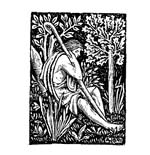
The Small Origins of Big Things
DIVINE DIRECTION
Ed. Note: This is the first installment of a three-part series.
The pyramids of Egypt tower over their flat desert surroundings, and also over the world’s historiography. Their angles and lines are otherworldly, their design and construction still largely shrouded in mystery. What human mind could have envisioned so grand and fine a thing ex nihilo? What mere mortal intellect could have encompassed such grandeur within the blank pages of an imagination?
The answer is that the pyramids didn’t start as pyramids. They started as flat buildings called masatib (singular: mastaba) in Arabic. The word mastaba means “mud bench,” and that is just what a mastaba looks like. Low and wide, masatib are where Egyptian rulers and other nobility were buried before pyramids came into fashion. And how did the pyramid craze happen? Someone decided to outdo his aggrandizing architectural rivals by putting one mastaba on top of another to make a two-layer tomb.
But surely the world’s first mastaba-stacker couldn’t have thought the game would end there. Because someone else soon decided to up the ante by making a stack of three masatib instead of two. You can see where this is going. The step pyramid of Djoser, still visible today, shows this mastaba-on-mastaba business in midstream, with six masatib piled up in tapering splendor, and the whole thing now done in limestone instead of mud brick.
“But what if we filled in the steps and made the whole arrangement smooth along four sides and pointy at the top?” someone gazing at the Djoser pile in envy must have thought. A few tries at this and — voilà — the masterpieces at Giza, full-blown pyramids straight out of a geometry lesson, faced in shimmering rock and capped, some speculate, with electrum or solid gold.
You May Also Enjoy
Oprah and the age of casual sinning she embodied, coupled with therapeutic celebrations of the same, must be met with a heavy dose of hard reality.
If, God forbid, the need should arise, is it licit for a Christian to resist evil by force, to take up a weapon and kill an aggressor?
The West's turning away from Faith and the sacraments has opened a void we now try to fill with whatever hucksters come up with next.

